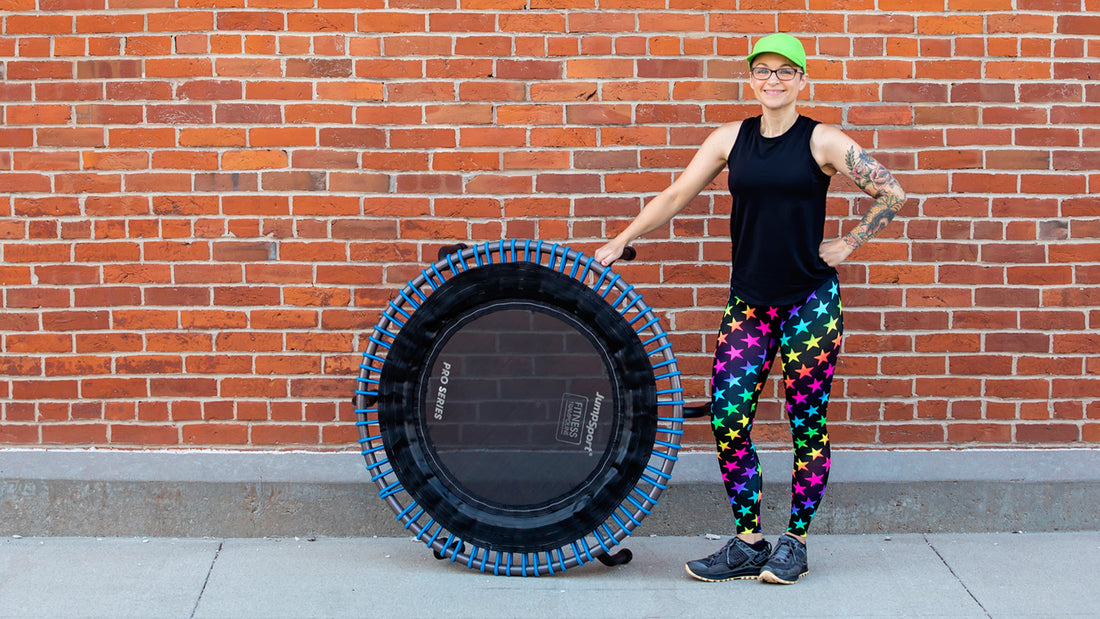I ran long distance for over 20 years. I averaged anywhere from 3-8 miles per run 3 to 4 times a week. As I approached my 40th birthday, my body was asking me for something different and perhaps more gentle. It was around this time that I earned my yoga and rebounding certifications. Trampoline rebounding and running are both great forms of exercise that can help you stay healthy and fit. While they may seem similar in some ways, there are actually some key differences between the two that make them unique. Let's explore the difference between trampoline rebounding and running.
- Impact on Joints
One of the biggest differences between trampoline rebounding and running is the impact on your joints. Running is a high-impact exercise that puts a lot of stress on your joints, especially your knees and ankles. On the other hand, trampoline rebounding is a low-impact exercise that is easier on your joints. The trampoline absorbs some of the impact when you land, reducing the stress on your joints. It is absolutely critical to use proper form when rebounding in order to keep it a gentle exercise. Improper form can easily lead to achy knees!
- Calories Burned
Both trampoline rebounding and running can help you burn calories, but trampoline rebounding may actually be more effective. According to research, rebounding can burn more calories than running, cycling, or other aerobic exercises. The constant bouncing and jumping motion engages multiple muscle groups and increases your heart rate, resulting in a higher calorie burn.
- Muscles Worked
Running is a great cardio workout that primarily works your lower body, including your legs and glutes. Trampoline rebounding, on the other hand, provides a full-body workout. The bouncing motion engages your legs and core, while the jumping motion engages your upper body. This means that you can tone your entire body while having fun on a trampoline. I can personally attest to increased core strength from rebounding vs running.
- Accessibility
Running is a relatively easy exercise that can be done almost anywhere. All you need is a good pair of running shoes and some open space. Trampoline rebounding, on the other hand, requires a trampoline. While trampolines are becoming more common in homes and gyms, they may be unaffordable for some people. While it can be tempting to buy an inexpensive rebounder, there really is a noticeable difference when you purchase one that is high quality.
- Fun Factor
Finally, trampoline rebounding is just plain fun! The feeling of bouncing up and down is exhilarating and can make exercise feel less like a chore. Running, on the other hand, can be monotonous for some people.
Trampoline rebounding and running are both great forms of exercise, but they have their own unique benefits. If you're looking for a low-impact exercise that's fun and provides a full-body workout, trampoline rebounding might be the way to go. If you're looking for a cardio workout that primarily works your lower body and can be done almost anywhere, running might be a better choice. Ultimately, the best exercise is the one that you enjoy and can stick with over time.


3 comments
I am almost 75 years old and bought my first rebounder just yesterday.
Up to now my exercise of choice was brisk-walking, and prior to that it was jogging.
I’ve read a lot online about rebounding, and watched quite a few videos.
I’m expecting my rebounder to bring me at least as many fitness benefits as any other forms of exercise I’ve tried, and it looks to be safe and fun!
Looking forward to this info
I do both. Two and two. I find you can do a cardio workout on the rebounder which is fabulous and the body is not sore the next day. While I can still run I will but in our winters in Cape town where there are rainy days I love to jump. Keep up the rebounding videos xx